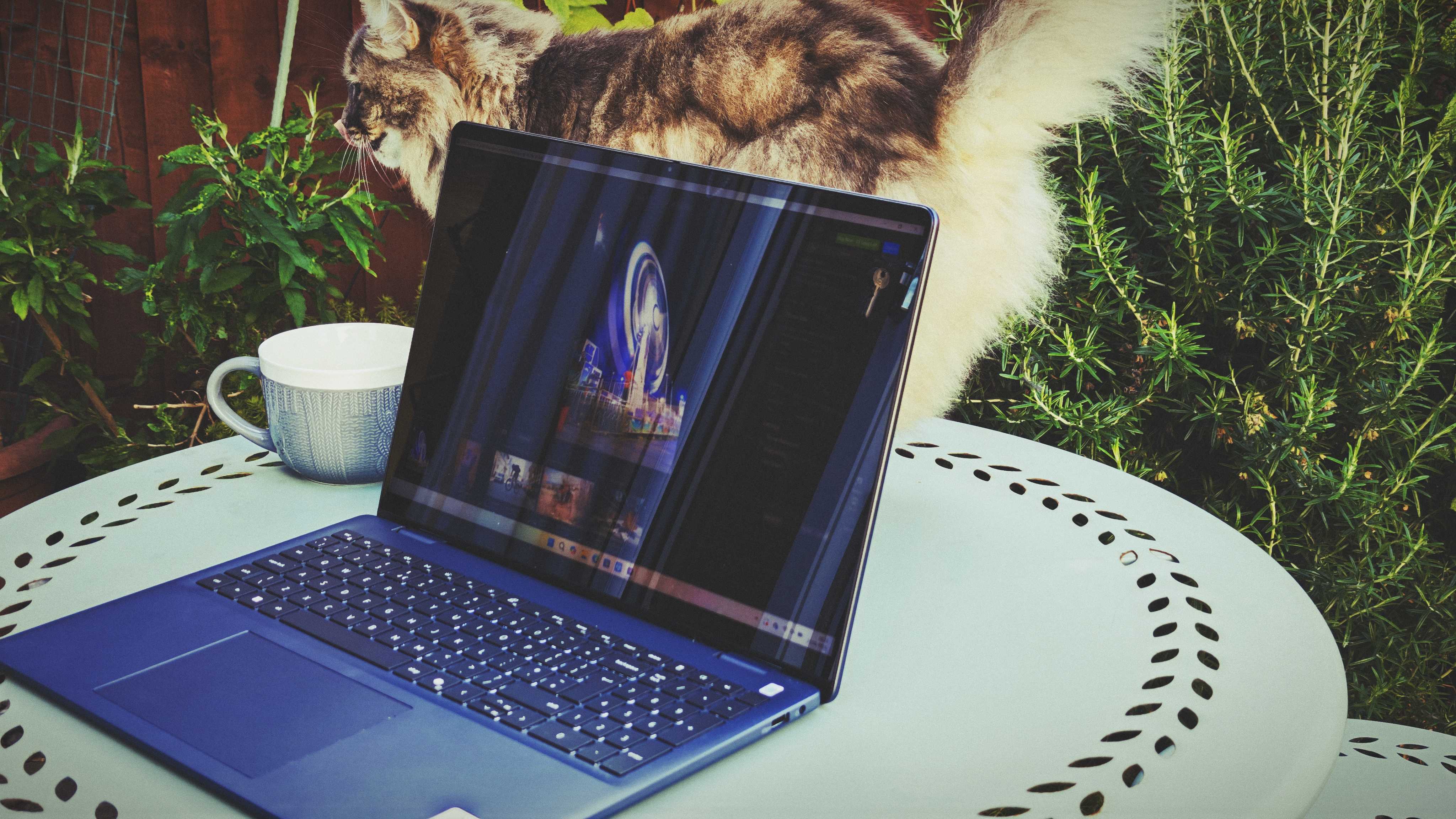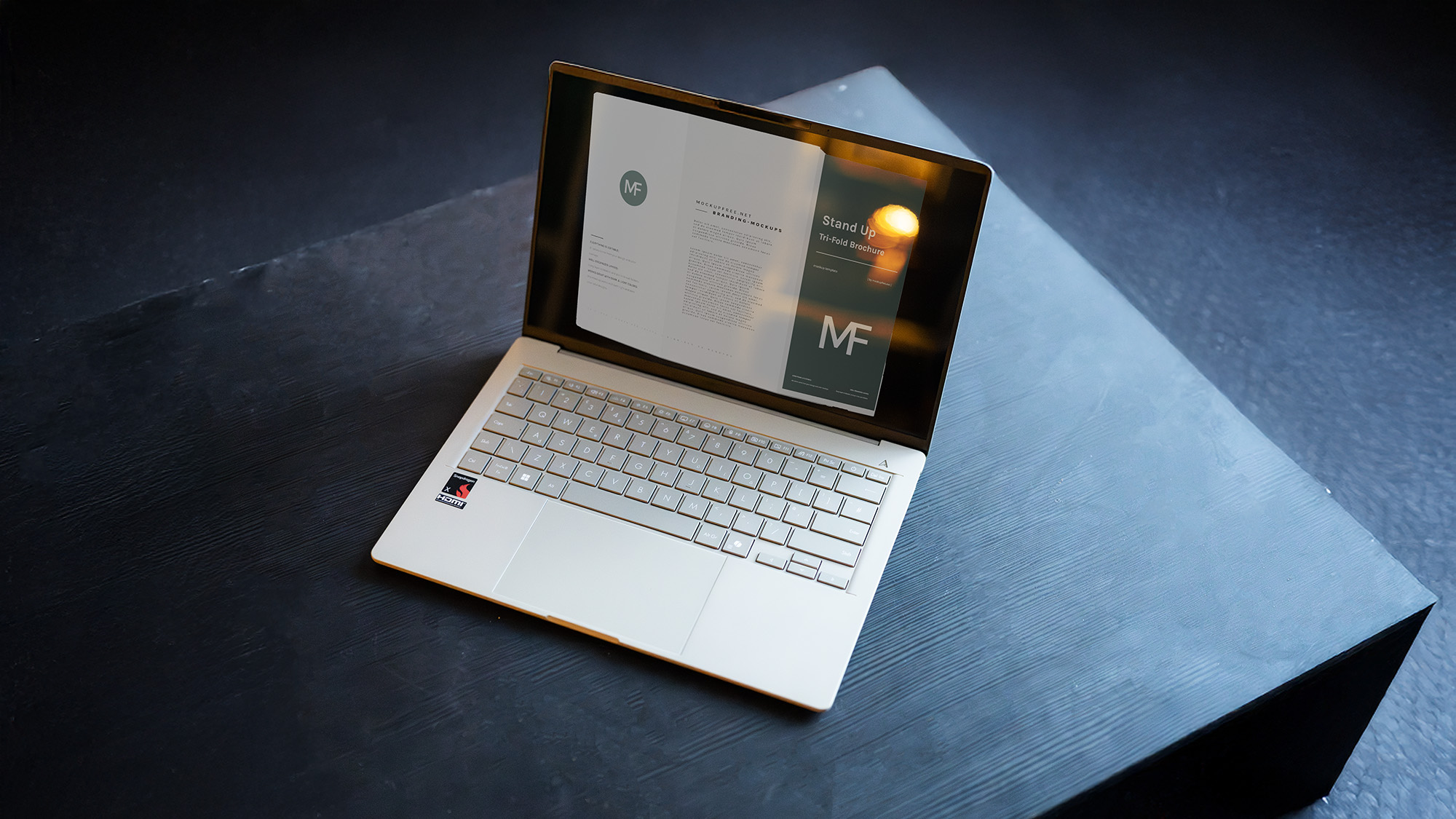Our Verdict
The Dell 16 Plus 2-in-1 is a versatile convertible laptop from this famously reliable computer giant. The big, bright touchscreen is equally great for photo-editing as it is for watching films in bed, and the ergonomics of the sturdy build are generally very pleasing in use. Adding to that, you get a capable, big laptop for both work and (a little) play for under £/$1,000 (at least the base model). It is quite heavy, though, the Intel Arc graphics still lag behind Apple and laptops with NVIDIA graphics on board, and despite 32GB of RAM, its top-end performance is relatively limited compared to zippier rivals. If you don't need 3D prowess or intense processing power, this Dell hits a sweet spot between value and performance for a lot of users.
For
- Excellent Mini-LED touchscreen
- Sturdy but smooth 2-in-1
- Good value for power
Against
- No discrete graphics
- Some touchpad frustrations
- Not the flashiest design
Why you can trust Creative Bloq
The Dell 16 Plus 2-in-1 is a key figure in the first lineup of the renamed (and slightly rebranded) fleet of Dell laptops coming out in 2025. We've already reviewed the Dell Pro 13 Premium, which, while being a capable business laptop, may not surpass any of our top options for the best laptops for photo editing or video editing. So seeing as that's a £/$2,000 machine, surely the Dell 16 Plus 2-in-1, priced at half that, won't stand a snowball's chance in the proverbial, right?
Actually, that might not be the case.
I've had it for the last three weeks, using it for work, hobbies and play, including writing for this website, editing videos and photos and even doing some (light) gaming, and I've found a lot to like about it.
Key specifications
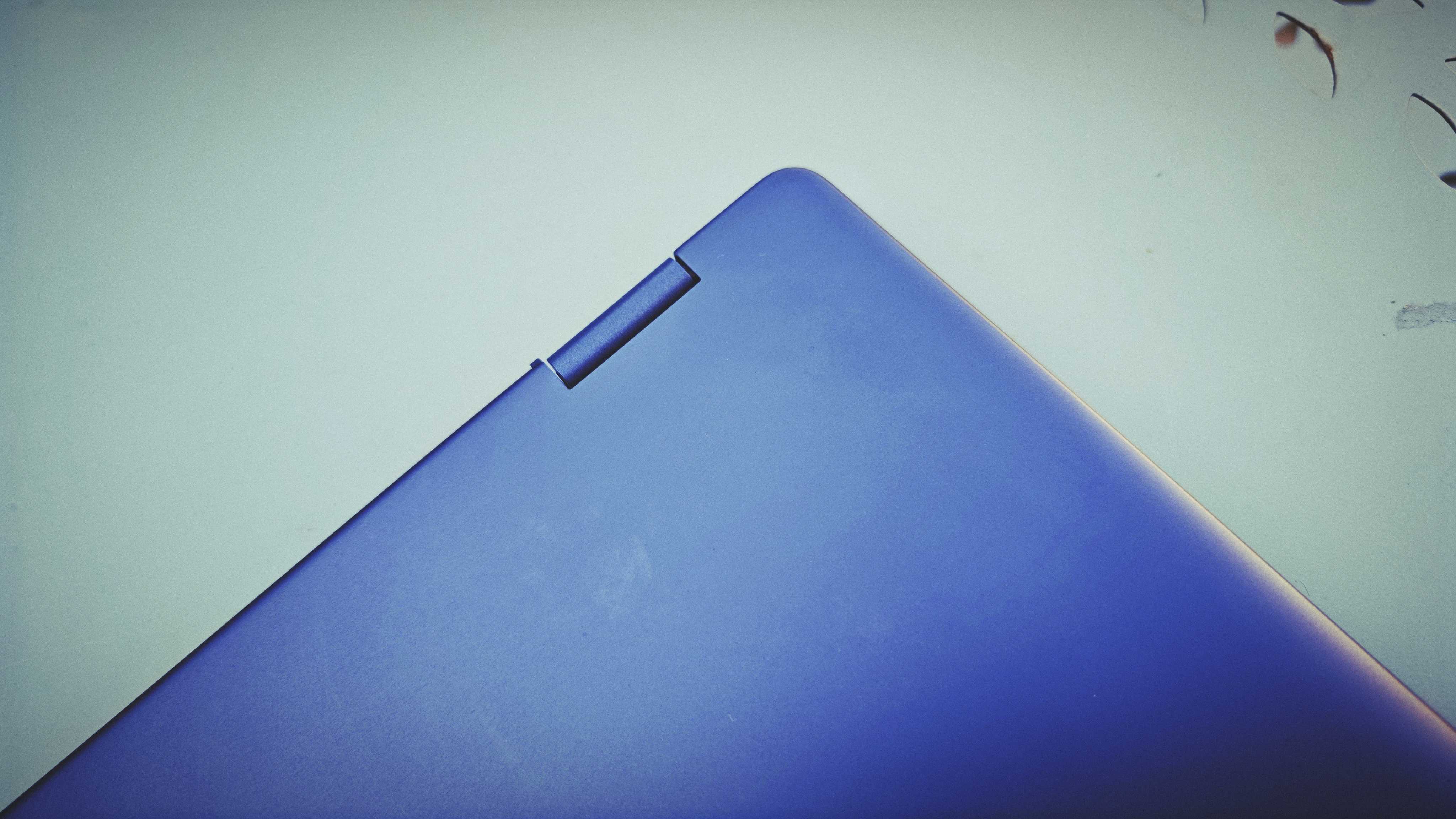
CPU: | Intel Core Ultra 7 258V |
NPU: | 47 TOPS |
Graphics: | Intel Arc Graphics (16GB) |
Memory: | 32GB LPDDR5X RAM |
Storage: | 1TB SSD |
Screen size: | 16.0in |
Screen type: | Mini-LED |
Resolution: | 2560x1600 |
Refresh rate: | 90Hz |
Colour gamut (measured): | 99.2% DCI-P3, 96% sRGB |
Brightness (measured): | 552 nits |
Ports: | 1x Thunderbolt 4 w/DP 2.1 and power delivery, 1x USB-C 3.2 w/DP 1.4 and power delivery, 1x USB-A 3.2, 1x HDMI 2.1, 1x universal audio jack |
Wireless connectivity: | Wi-Fi 7, Bluetooth |
Dimensions: | 16.99 x 356.78 x 250.60mm |
Weight: | 2.05kg |
Design, build and display
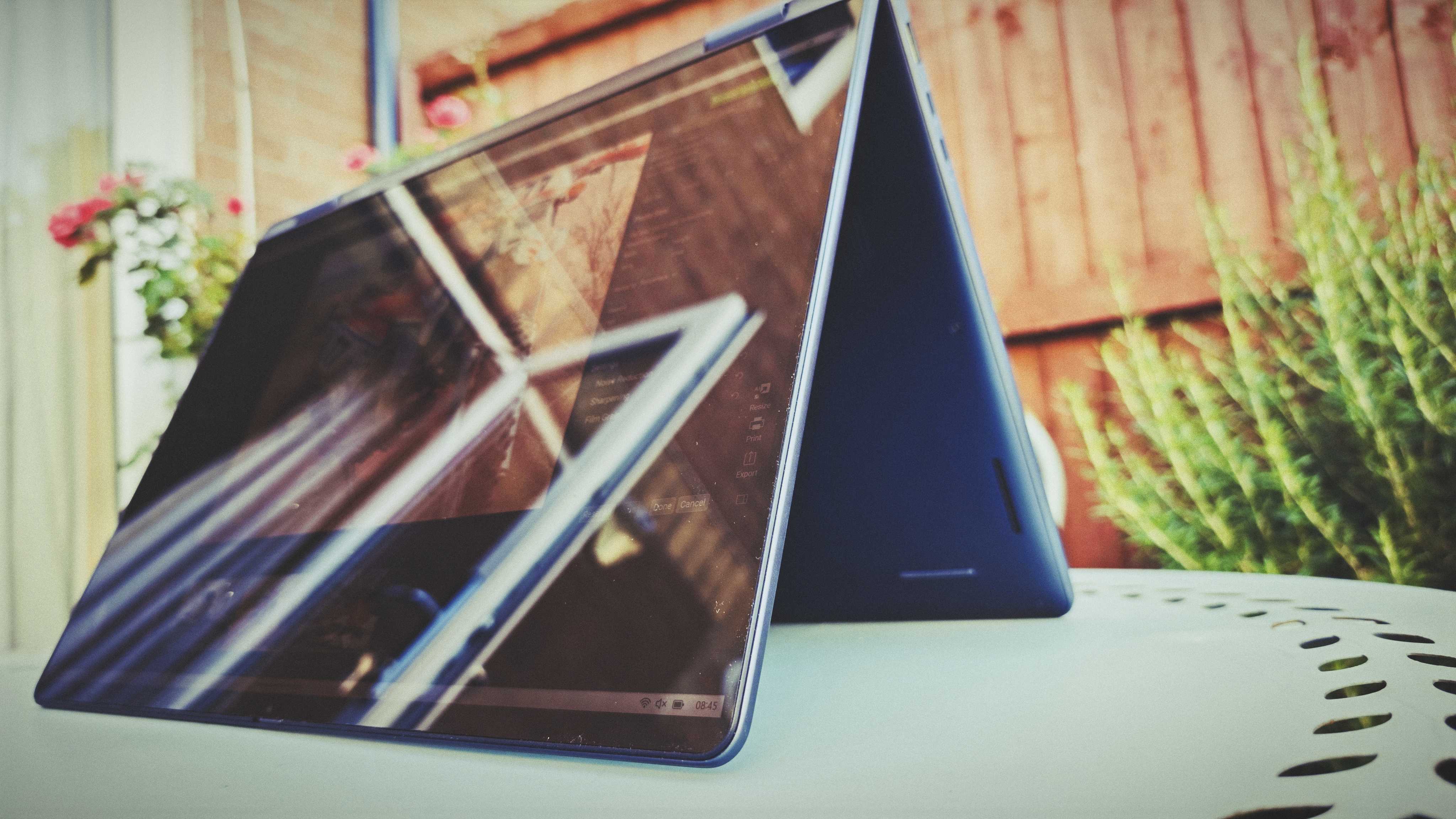
• Big, bright touchscreen
• 2-in-1 with sturdy hinge
The Dell 16 Plus is the spiritual (and renamed) successor to the Dell Inspiron 16 2-in-1, with hints of the Dell XPS in there too. Dell have simplified their product naming, no doubt inspired by Apple's exceedingly straightforward (and easy-to-understand) range of MacBooks. The Dell 16 Plus is marketed as a business laptop, first and foremost, but one aimed at content creators and more casual users too, thanks to its big touchscreen and 2-in-1 functionality (here most impressive in its video/image-presenting tent mode).
The colour is a little darker grey than the previous generation of computers from Dell, but retains that inoffensive, office-friendly and, let's face it, a little dull air about it. There's precious little of the design flair you'll see in ASUS or Huawei laptops, or the friendly vibes emanating from most Acer machines of a similar ilk, despite the colour being upgraded from a shade of grey to a shade of midnight blue. It's a tool, designed to be a tool, and marketed as one too.
But for a tool, it's a pretty brilliantly designed one. The build quality of the chassis is excellent, as usual from Dell. There's no flex in the body or the lid, which comes in handy when you flip the thing into tent or tablet mode and the 16-inch Mini-LED touchscreen becomes the main attraction.
Daily design news, reviews, how-tos and more, as picked by the editors.
When you've got a mechanism like that, the hinge needs to be sturdy and strong, and that's certainly the case here. It's easy to flip but the laptop stays reassuringly in whatever position you put it.
Port selection is decent if unspectacular, but there is a Thunderbolt 4 port here, which is a nice little treat. Alongside that, you'll find a USB-C 3.2 with DisplayPort and power delivery compatibility, along with a USB-A 3.2 port, HDMI 2.1 port and an audio jack.
What this laptop is not is lightweight. That extra size and sturdiness comes at a cost, and it's your back that will pay, as the thing weighs a very considerable 2.05 kilograms, which is more than many gaming laptops do nowadays.
The screen makes it worth it, though. 16 inches big, it's a 2.5K (2560x1600) Mini-LED, sharp and bright and colour-accurate enough for nearly photo-editing job. I measured it at a peak of 552 nits in HDR mode with 99.2% DCI-P3 colour coverage (and 96% sRGB), so that's another win for anyone manipulating (still or moving) images.
Design score: 4/5
Features
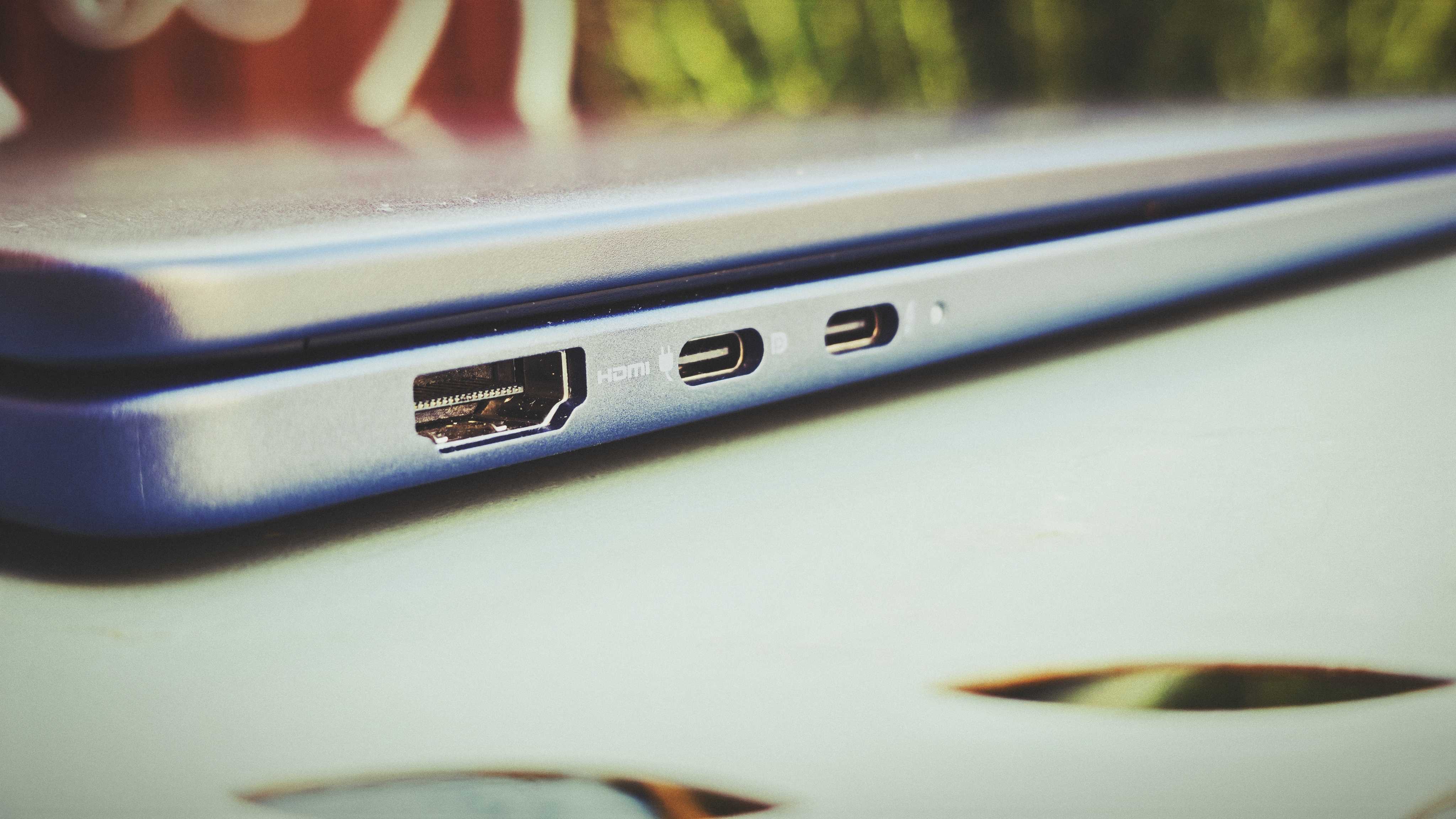
• 32GB RAM
• Integrated graphics only
On the inside, you'll get a choice of two processors, either the Intel Core Ultra 7 256V or the more powerful 258V, which is the one occupying the internal space in my test unit. That one comes with 32GB of RAM and a 1TB SSD, while the other models have 16GB of RAM and a choice of 512GB or 1TB SSD storage. The base model only has a FHD+ (1920x1200) screen, while the other two both sport the aforementioned 2.5K spec.
The memory card is an LPDDR5X spec, which is an upgraded last-gen version, with very decent bandwidth of 8533MT/s
There's no choice when it comes to graphics, though, as all the options have Intel Arc fitted as standard. It's not enough to play Doom: The Dark Ages or run Unreal Engine development sessions on it, but it's a huge step up from the Iris Xe cards of yesteryear, as the benchmarks below will show. There's Wi-Fi 7 on board, along with Bluetooth and speakers that, dare I say it, aren't all that shabby. There's a decent volume, some bass and better sound fill than in many other laptops (although I will always prefer external speakers or headphones myself).
The keyboard is Dell's standard, reliable but unspectacular offering. Key response and travel is good and natural (I prefer it to the MacBook Air), and I quickly got used to key placement. Meanwhile, the Mylar touchpad is responsive, although I found the click a little stiffer and the non-click tap response a little less responsive than the best touchpads in the business (again, the MacBooks, along with the ASUS ProArt ones).
Feature score: 4/5
Benchmark scores
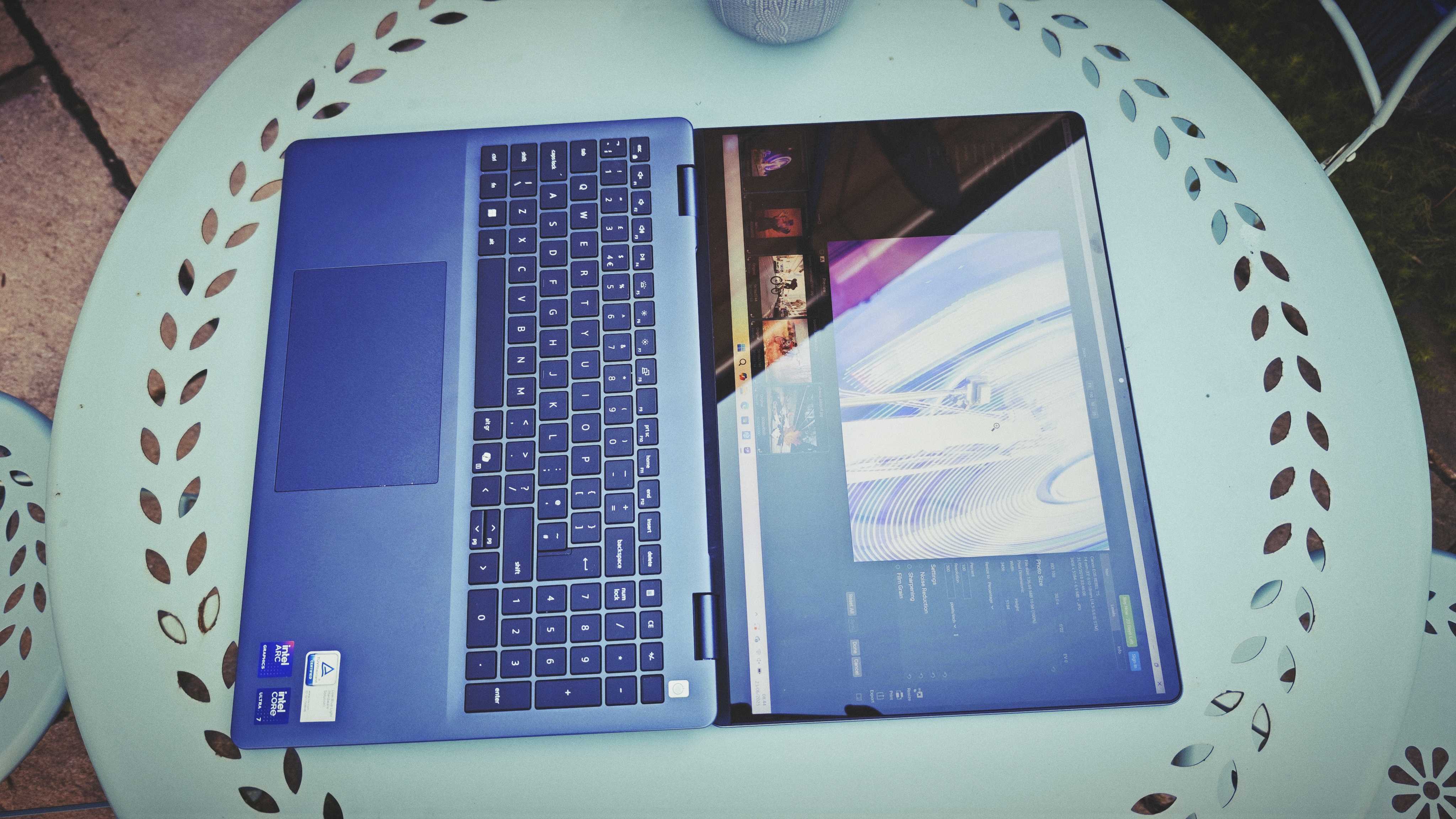
We test every one of our laptops using the same benchmarking software suite to give you a thorough overview of its suitability for creatives of all disciplines and levels. This includes:
• Geekbench: Tests the CPU for single-core and multi-core power, and the GPU for the system's potential for gaming, image processing, or video editing. Geekbench AI tests the CPU and GPU on a variety of AI-powered and AI-boosted tasks.
• Cinebench: Tests the CPU and GPU's ability to run Cinema 4D and Redshift.
• UL Procyon: Uses UL Solutions' Procyon software suite to test the system's ability for AI image generation in Stable Diffusion, its Microsoft Office performance and its battery life in a looping video test.
• Topaz Video AI: We use Topaz Video AI to test the system's ability to upscale video and convert video to slow-motion.
• PugetBench for Creators: We use the PugetBench for Creators benchmarking suite to test the system's ability to run several key tasks in Photoshop and Adobe Premiere Pro, as well as its performance when encoding/transcoding video.
• ON1 Resize AI: Tests the system's ability to resize 5 photos to 200% in a batch process. We take the total time taken to resize the images and divide by 5.
Performance

• Good CPU performance for the price
• Great for photo processing, less for video and 3D
The Dell 16 Plus 2-in-1 slots right in where expected in most of our performance tests. CPU performance is on par with similar Windows laptops, similar to the HP Omnibook Ultra Flip 14, a little behind the likes of the ASUS Zenbook A14 and a little ahead of the MSI Prestige 13 AI+ Evo and the Acer Swift 16 AI.
One thing to note is that if you're in the market for a Dell laptop in particular, the 16 Plus almost matches the much more expensive Dell Pro 13 Premium in most CPU and GPU tests, and actually beats it in a few.
Obviously it doesn't touch discrete-graphics laptops in GPU and 3D jobs, but is fully competitive against other Intel Arc-powered machines, and at this price point, that's an important consideration.
Where it lags behind the competition is in Stable Diffusion gen-AI processing, though, and it's unspectacular in the Topaz Video AI upscaling test and while it runs Premiere Pro easily enough, you'll probably want to leave heavier editing and rendering jobs to more powerful alternatives.
Photoshop performance is perfectly acceptable, though, and photo-resizing and general office tasks will run well here. I was a little surprised to only get 8 hours and 39 minutes of battery life out of it, but literally two days after running that specific test, Dell released a software update that aims to increase battery efficiency in laptops including this one, so clearly if it's an issue, Dell is aware and working on it.
Performance score: 3.5/5
Price
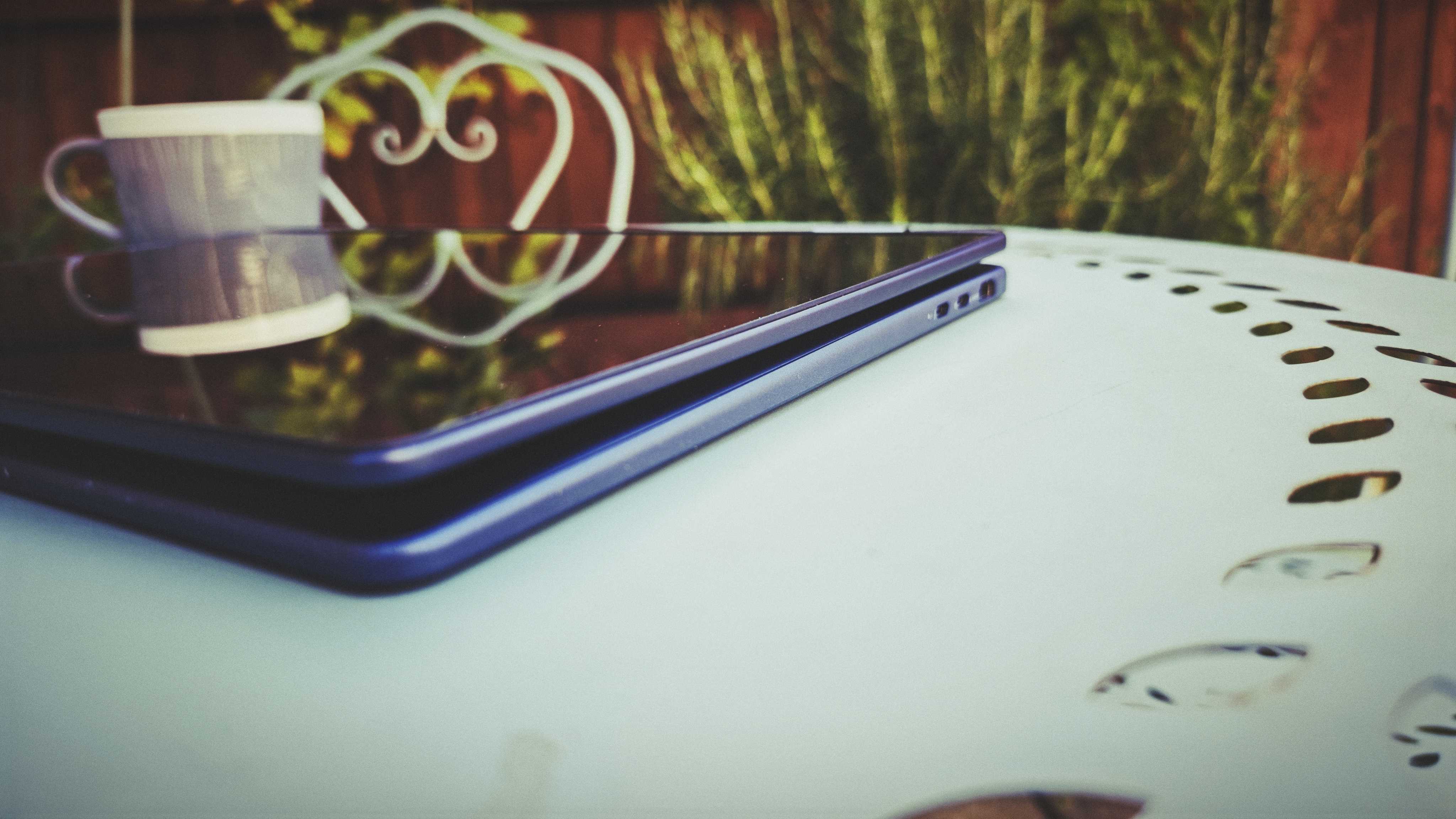
You can get the base Dell 16 Plus 2-in-1 for under £/$1,000, but the model I tested comes in at £1,299 in the UK and $1,399 in the US. If performance is premium, I'd recommend that one, with the 32GB of RAM giving it that little extra oomph, but if you're not fussed about marginal gains, the base model with 16GB RAM and an FHD+ screen offers pretty good value for money.
Value score: 4/5
Who is it for?
• Business users and photo editors
The 2-in-1 functionality and the touchscreen make it a great laptop for versatility, usable for work and entertainment in equal measures. Its screen and CPU make it a great-value laptop for photo editors too, but pro graphic designers will need more graphic oomph.
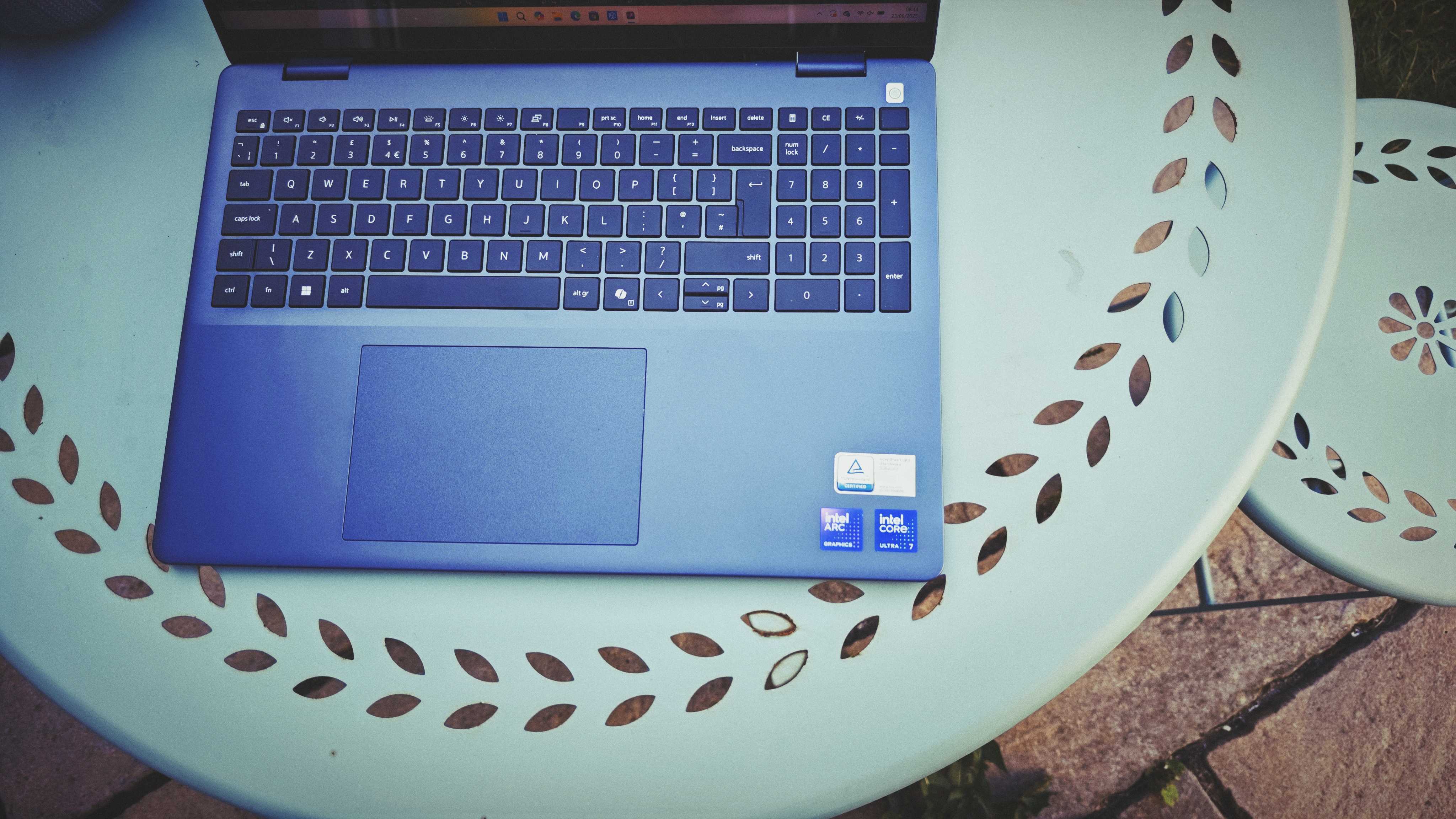
Attributes | Notes | Rating |
|---|---|---|
Design: | It's a Dell. It's a blue Dell, but a Dell, for better and worse. | 4/5 |
Features: | Up-to-date internals, good keyboard and touchpad, lots of RAM | 4/5 |
Performance: | Good CPU performance, decent AI processing, integrated graphics only | 3.5/5 |
Value: | Around £/$1k offers good bang for the buck | 4/5 |
Buy it if...
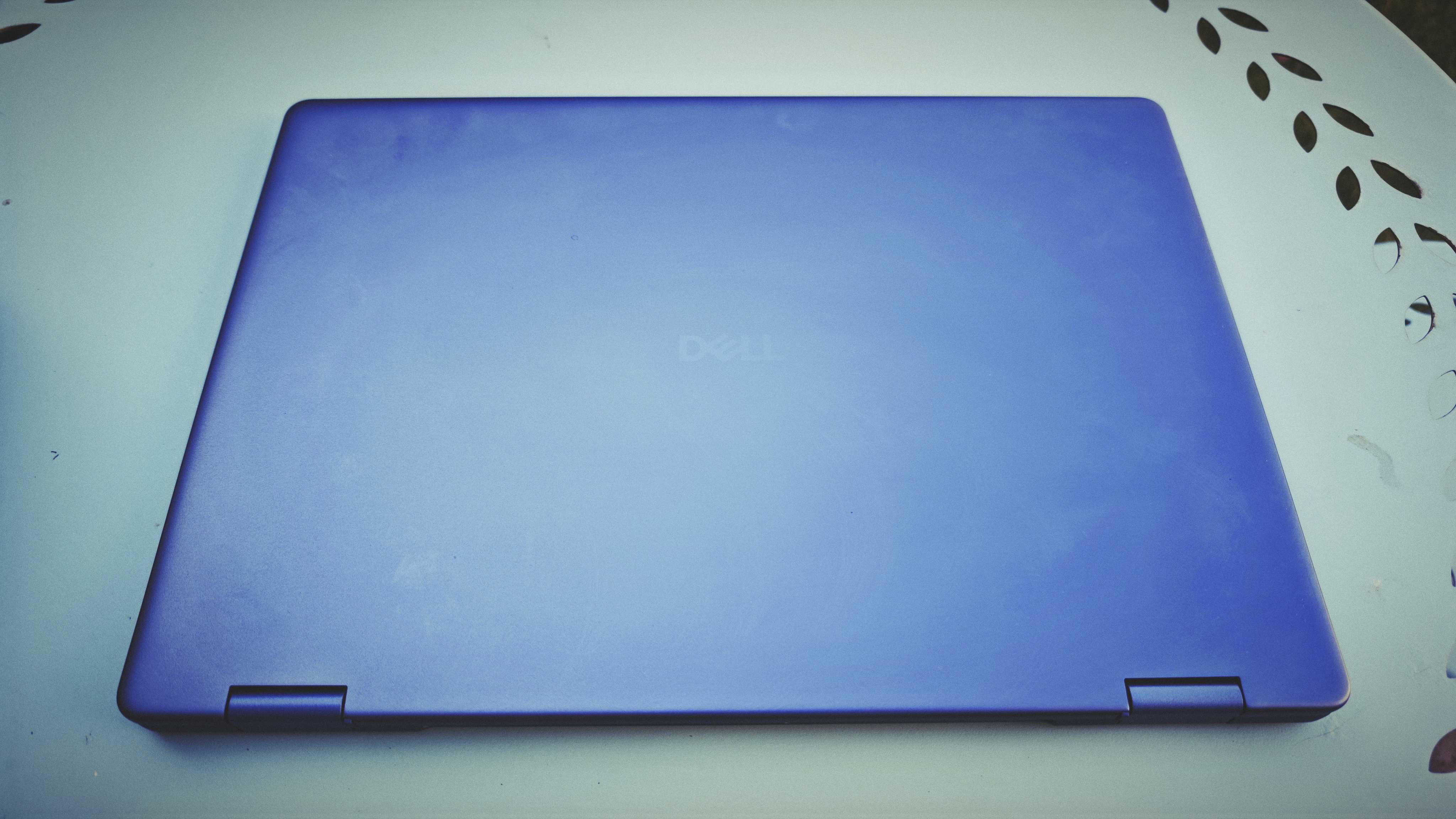
- You want a capable, versatile photo-editing laptop
- You want a 2-in-1 for under a grand
- You like the word 'sturdy'
Don't buy it if...
- You need something light for on-the-go work
- You need graphic prowess
- You don't like touchscreens
Also consider
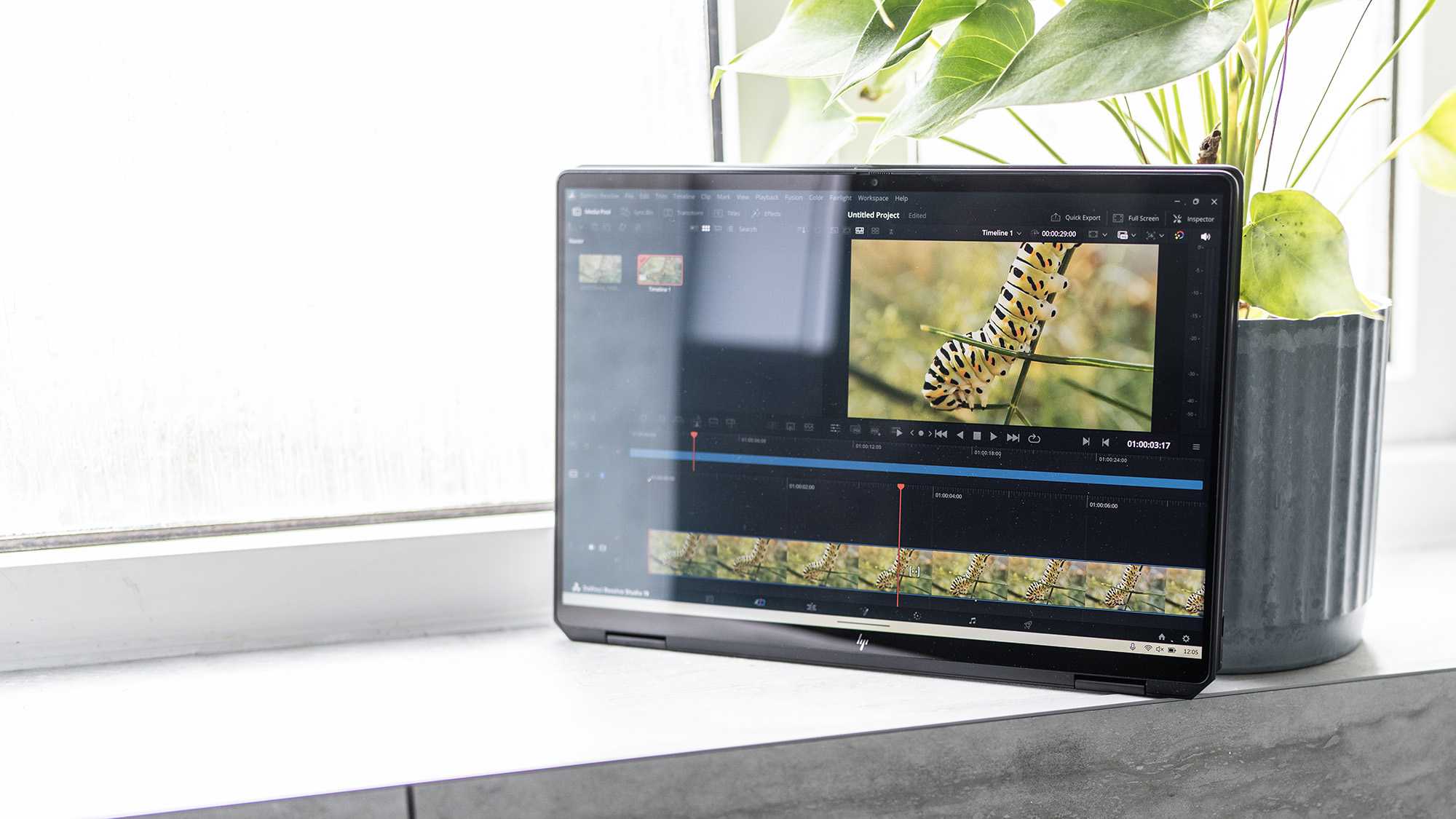
Another 2-in-1 like the Dell, this is a more compact, but not quite as powerful, alternative for those who prefer portability.
Pros
- 2-in-1 versatility
- Respectable performance
- Slim and light
Cons
- Only integrated graphics
- No jump in performance over previous gen
- Ports hard to tell apart
out of 10
The Dell 16 Plus 2-in-1 is a versatile convertible laptop from this famously reliable computer giant. The big, bright touchscreen is equally great for photo-editing as it is for watching films in bed, and the ergonomics of the sturdy build are generally very pleasing in use. Adding to that, you get a capable, big laptop for both work and (a little) play for under £/$1,000 (at least the base model). It is quite heavy, though, the Intel Arc graphics still lag behind Apple and laptops with NVIDIA graphics on board, and despite 32GB of RAM, its top-end performance is relatively limited compared to zippier rivals. If you don't need 3D prowess or intense processing power, this Dell hits a sweet spot between value and performance for a lot of users.

Erlingur is the Tech Reviews Editor on Creative Bloq. Having worked on magazines devoted to Photoshop, films, history, and science for over 15 years, as well as working on Digital Camera World and Top Ten Reviews in more recent times, Erlingur has developed a passion for finding tech that helps people do their job, whatever it may be. He loves putting things to the test and seeing if they're all hyped up to be, to make sure people are getting what they're promised. Still can't get his wifi-only printer to connect to his computer.
You must confirm your public display name before commenting
Please logout and then login again, you will then be prompted to enter your display name.
